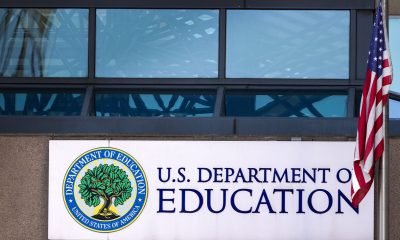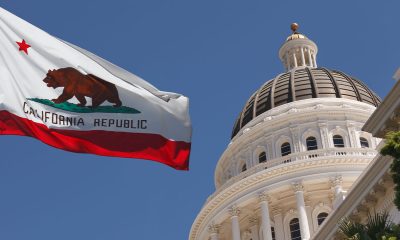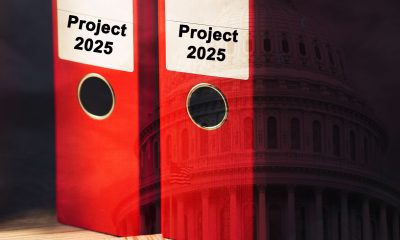Activism
COMMENTARY: Let’s Talk Black Education
What’s needed for Black children is a comprehensive and systematic approach like the state’s roadmap for English learners, which states that “English learners are the shared responsibility of all educators and that all levels of the educational system have a role to play in ensuring the access and achievement of the over 1.3 million English learners who attend California schools.”

Would Black Students Thrive with The Same Focus California Gives English Learners?
By Dr. Margaret Fortune
In a state known for its progressivism, you may find it shocking that Black Californians live under a mandate that nothing can be done for Black children in our public schools as a matter of law.
This is true even though according to the California Department of Education, 67% of Black students don’t read or write at grade level. In math, nearly 80% of Black children do not perform at grade level, and 86% are below grade level in science.
That means that Black Californians are not being prepared to participate in the STEM economy for which our state has been the epicenter of innovation for the world.
Californians have become notorious for our misplaced values. If you go to a restaurant in California, you can’t have a plastic straw because a fish in the ocean might choke on it.
But if you are a Black child in California, where Democrats hold a super majority in the Legislature and the Governor’s office, the state will not protect you from receiving an inferior education, even though the evidence points to the fact that most Black children are being failed by the Golden State’s public schools.
In 2020, as Californians packed the streets chanting “Black Lives Matter,” most California voters went to the polls to defeat a ballot initiative that would have cleared the way for the state to provide targeted support for Black public-school children by repealing the state’s 25-year-old ban on considering an individual’s race in public education.
However, there are some insiders in Democratic politics who remain determined to bring about positive change. The California Democratic Party Black Caucus has proposed a set of amendments to the education plank of the party’s platform and is holding hearings calling on Democrats to advocate for closing achievement gaps and addressing funding inequities for Black students like the party does for other groups of students.
Black students make up 5% of the 6 million children in California’s public schools. And while the state rightly provides extra funding, instructional support and school accountability for certain high need students, there are 80,000 Black youth who do not qualify for supplemental funding because they are not low income, English Learners or foster youth.
Superintendent of Public Instruction Tony Thurmond recently appointed me to his Black Student Achievement Taskforce. In these conversations, thought leaders on Black education are openly asking the question, should all our Black students qualify for extra support? Is it right that 69% of Black students graduate from high school ineligible to even apply to a state college, like the University of California or the California State University?
One of the goals of the Superintendent’s Black Student Achievement Taskforce is to design a legislative package that addresses Black student achievement in California public schools.
It’s time to take back up the equity bill Secretary of State Shirley Weber introduced in 2018 when she was a member of the California Legislature. Although AB 2635 (Weber) did not specifically identify Black students, they would have qualified for extra funding based on standardized test scores in math and English language arts.
At the time, Weber said, “Now is the time to fix education inequities and target resources to students in need.”
In addition, California’s English Learner Roadmap, adopted by the State Board of Education in 2017, is a model for setting a policy vision for Black students.
What’s needed for Black children is a comprehensive and systematic approach like the state’s roadmap for English learners, which states that “English learners are the shared responsibility of all educators and that all levels of the educational system have a role to play in ensuring the access and achievement of the over 1.3 million English learners who attend California schools.”
I agree, and the same applies to over 300,000 Black children too.
California should apply the same comprehensive and robust set of laws, regulations and funding that it has for English learners to its Black students. If it did, results would be better for the state’s Black children.
Margaret Fortune is president and CEO of Fortune School of Education.
Activism
Oakland Post: Week of November 26 – December 2, 2025
The printed Weekly Edition of the Oakland Post: Week of November 26 – December 2, 2025
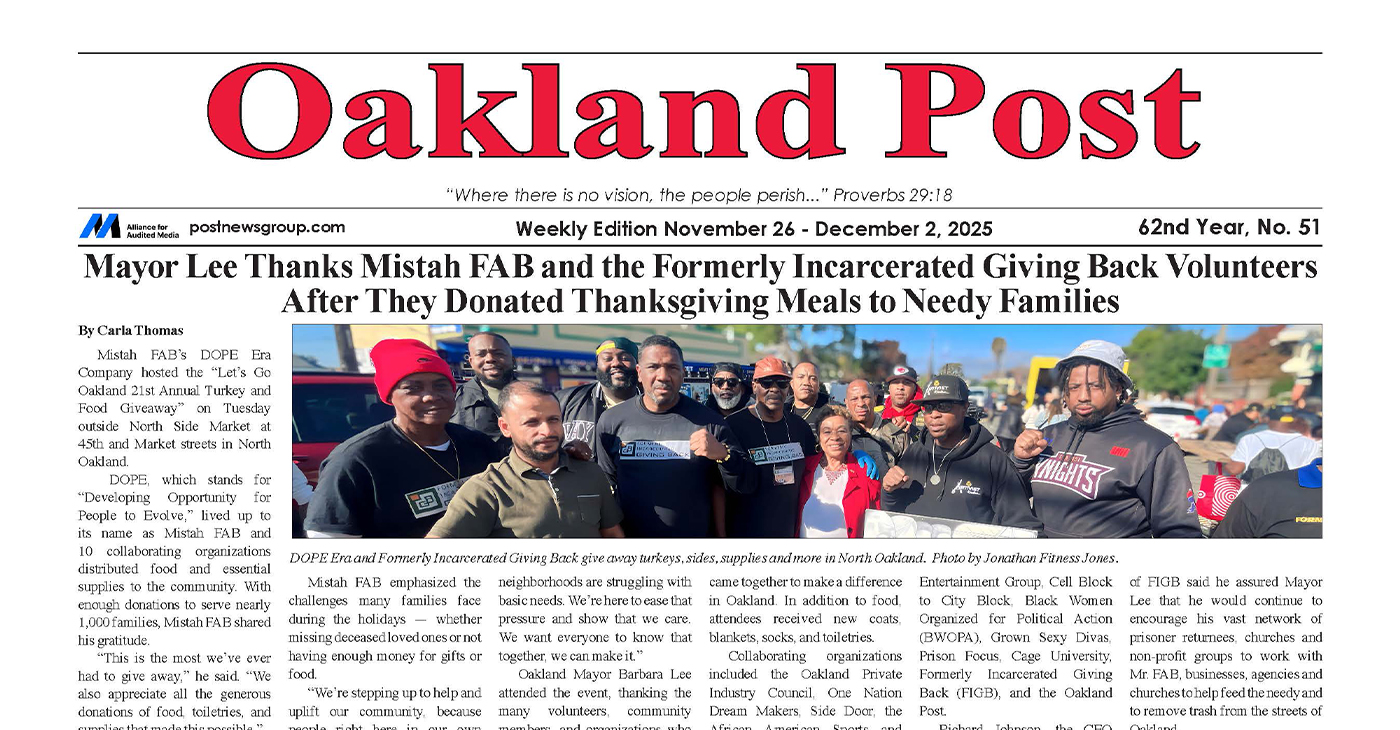
To enlarge your view of this issue, use the slider, magnifying glass icon or full page icon in the lower right corner of the browser window.
Activism
Oakland Post: Week of November 19 – 25, 2025
The printed Weekly Edition of the Oakland Post: Week of November 19 – 25, 2025
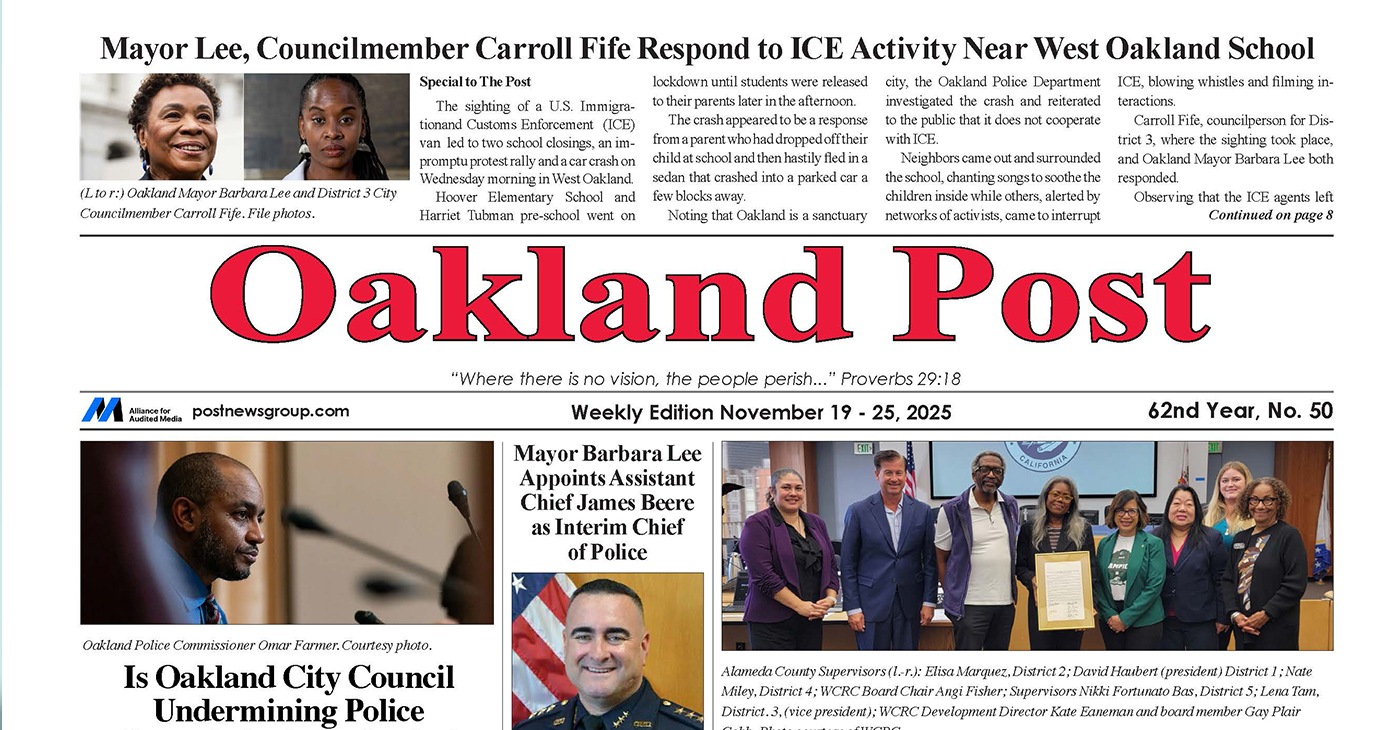
To enlarge your view of this issue, use the slider, magnifying glass icon or full page icon in the lower right corner of the browser window.
Activism
IN MEMORIAM: William ‘Bill’ Patterson, 94
Bill devoted his life to public service and education. In 1971, he became the founding director for the Peralta Community College Foundation, he also became an administrator for Oakland Parks and Recreation overseeing 23 recreation centers, the Oakland Zoo, Children’s Fairyland, Lake Merritt, and the Henry J. Kaiser Convention Center.

William “Bill” Patterson, 94, of Little Rock, Arkansas, passed away peacefully on October 21, 2025, at his home in Oakland, CA. He was born on May 19, 1931, to Marie Childress Patterson and William Benjamin Patterson in Little Rock, Arkansas. He graduated from Dunbar High School and traveled to Oakland, California, in 1948. William Patterson graduated from San Francisco State University, earning both graduate and undergraduate degrees. He married Euradell “Dell” Patterson in 1961. Bill lovingly took care of his wife, Dell, until she died in 2020.
Bill devoted his life to public service and education. In 1971, he became the founding director for the Peralta Community College Foundation, he also became an administrator for Oakland Parks and Recreation overseeing 23 recreation centers, the Oakland Zoo, Children’s Fairyland, Lake Merritt, and the Henry J. Kaiser Convention Center.
He served on the boards of Oakland’s Urban Strategies Council, the Oakland Public Ethics Commission, and the Oakland Workforce Development Board.
He was a three-term president of the Oakland branch of the NAACP.
Bill was initiated in the Gamma Alpha chapter of Kappa Alpha Psi Fraternity.
In 1997 Bill was appointed to the East Bay Utility District Board of Directors. William Patterson was the first African American Board President and served the board for 27 years.
Bill’s impact reached far beyond his various important and impactful positions.
Bill mentored politicians, athletes and young people. Among those he mentored and advised are legends Joe Morgan, Bill Russell, Frank Robinson, Curt Flood, and Lionel Wilson to name a few.
He is survived by his son, William David Patterson, and one sister, Sarah Ann Strickland, and a host of other family members and friends.
A celebration of life service will take place at Henry J. Kaiser Convention Center (Calvin Simmons Theater) on November 21, 2025, at 10 AM.
His services are being livestreamed at: https://www.facebook.com/events/1250167107131991/
In lieu of flowers, donations can be made to the Euradell and William Patterson scholarship fund TBA.
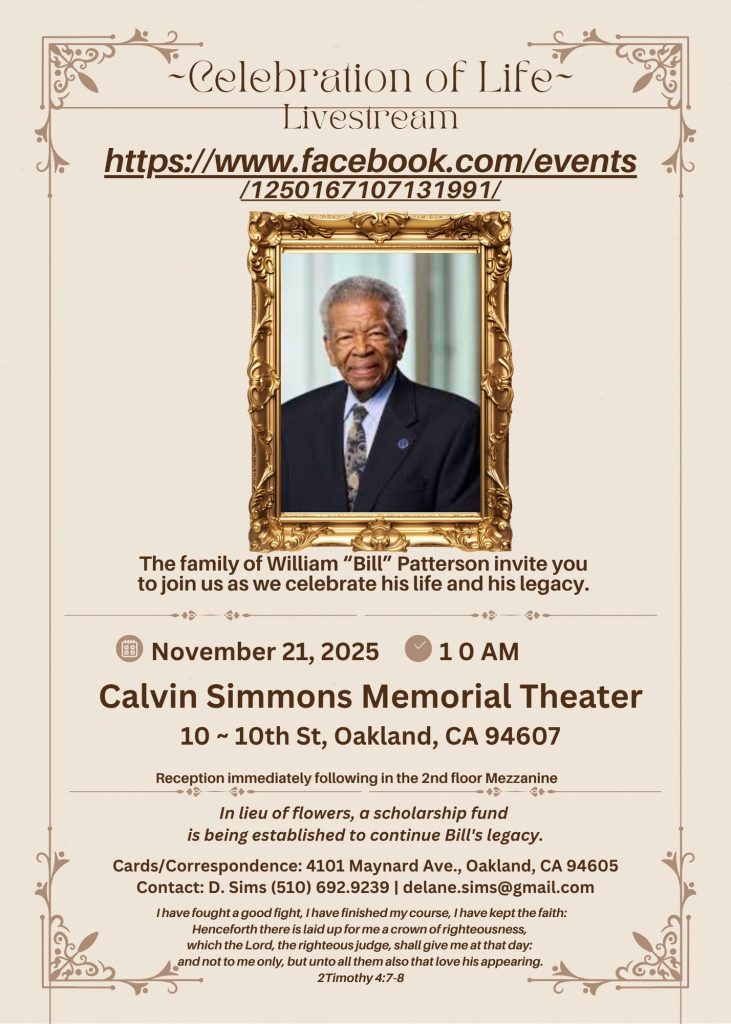
-

 Activism4 weeks ago
Activism4 weeks agoOakland Post: Week of November 5 – 11, 2025
-
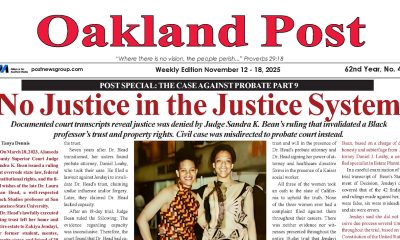
 Activism3 weeks ago
Activism3 weeks agoOakland Post: Week of November 12 – 18, 2025
-

 Activism2 weeks ago
Activism2 weeks agoIN MEMORIAM: William ‘Bill’ Patterson, 94
-

 Activism3 weeks ago
Activism3 weeks agoHow Charles R. Drew University Navigated More Than $20 Million in Fed Cuts – Still Prioritizing Students and Community Health
-

 #NNPA BlackPress3 weeks ago
#NNPA BlackPress3 weeks agoThe Perfumed Hand of Hypocrisy: Trump Hosted Former Terror Suspect While America Condemns a Muslim Mayor
-

 #NNPA BlackPress3 weeks ago
#NNPA BlackPress3 weeks agoProtecting Pedophiles: The GOP’s Warped Crusade Against Its Own Lies
-

 Bay Area3 weeks ago
Bay Area3 weeks agoNo Justice in the Justice System
-

 #NNPA BlackPress4 weeks ago
#NNPA BlackPress4 weeks ago2026 Subaru Forester Wilderness Review: Everyday SUV With Extra Confidence

